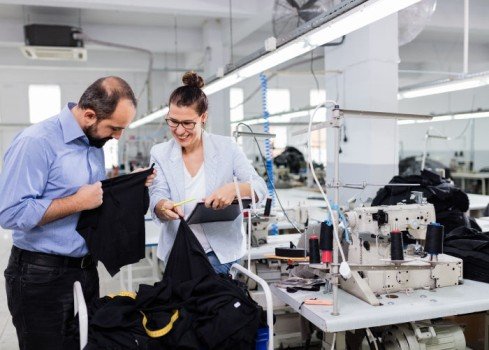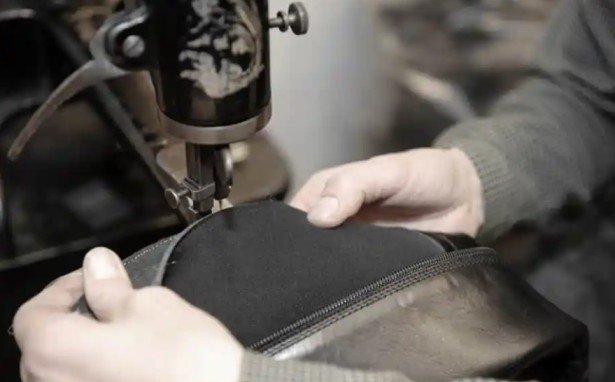
I. Introduction
Quality control holds paramount importance for international buyers in the realm of bag manufacturing. Their emphasis on this aspect stems from the need to deliver consistent, top-tier products that meet customer expectations, thus bolstering brand reputation and ensuring customer satisfaction. By proactively addressing quality issues, they can save costs and avoid detrimental impacts on their brands. Moreover, adherence to legal standards, gaining a competitive edge, efficient supply chain management, and fostering strong, long-term relationships with manufacturers are all critical benefits. Additionally, the reduction of material waste aligns with sustainability goals, a growing concern for both international buyers and consumers, underscoring the multifaceted significance of quality control in the industry.
II. The Foundation of Quality Control
The fundamental principles and objectives of quality control
Quality control in bag production is a systematic and essential aspect of the manufacturing process that focuses on ensuring that bags meet established standards and specifications. Its fundamental principles revolve around consistency, precision, and customer satisfaction.
- Consistency: At its core, quality control aims to maintain consistency in the manufacturing process. This means that each bag produced should closely match the desired design, specifications, and overall quality. This consistency is crucial for creating a reliable and predictable product.
- Precision: Precision is another key principle of quality control. It involves meticulous attention to detail at every stage of bag production, from material selection to final inspection. Precise measurements, cutting, stitching, and finishing are essential to achieving a high-quality end product.
- Customer Satisfaction: Ultimately, the primary objective of quality control is to ensure customer satisfaction. Bags must not only meet the manufacturer’s internal quality standards but also align with the expectations and needs of the end-users. Satisfied customers are more likely to become loyal customers and brand advocates.
To achieve these fundamental principles, quality control in bag production encompasses several key objectives:
- Defect Prevention: Quality control strives to identify and rectify potential defects at the earliest possible stage in the production process. This proactive approach reduces waste, rework, and the risk of defective products reaching customers.
- Consistent Product Standards: Establishing and adhering to consistent product standards is essential. These standards encompass factors such as material quality, size, design, color, stitching, and overall durability. Adherence to standards ensures uniformity across batches of bags.
- Process Improvement: Continuous improvement is a central objective. Bag factories should regularly review and refine their quality control processes to identify areas for enhancement. This can lead to increased efficiency and a reduction in quality issues.
- Cost Efficiency: Quality control also aims to optimize costs by minimizing product defects and rejections. This helps bag manufacturers save money in the long run while maintaining product quality.
- Compliance and Safety: Quality control ensures that bags meet industry-specific regulations and safety standards. This is particularly important when manufacturing bags for specialized purposes, such as medical equipment or hazardous materials.

The impact of quality on customer satisfaction and brand reputation
Quality control plays a pivotal role in both customer satisfaction and brand reputation. For customers, it directly impacts their experience with a product. High-quality bags perform reliably, offer durability, and reduce the likelihood of defects, ultimately leading to increased satisfaction. When customers are happy with their purchases, they are more likely to become repeat buyers and recommend the brand to others. Quality control also reduces returns, saving both the brand’s reputation and resources.
On the brand side, the impact of quality control is equally profound. Quality is a distinguishing factor that sets a brand apart from competitors. A reputation for delivering high-quality bags not only fosters trust but also positions the brand as a leader in the market. This differentiation can lead to increased market share and the ability to command premium prices. Moreover, a commitment to quality aligns with sustainability efforts, appealing to eco-conscious consumers and positively contributing to the brand’s image. In essence, quality control isn’t just about ensuring product excellence; it’s a strategic move that enhances a brand’s reputation and fosters customer loyalty in a competitive landscape.
III. How bag factories choose and assess materials for quality
- Material Selection Criteria: Bag manufacturers begin by establishing stringent criteria for the materials they use. This involves considering factors such as the bag’s intended purpose, design, and customer expectations. For instance, a luxury handbag may require high-end leather, while a durable backpack might need robust nylon or canvas.
- Supplier Assessment: Manufacturers often collaborate with trusted suppliers with a proven track record of delivering quality materials. They assess suppliers based on factors like reliability, consistency, and adherence to industry standards. This partnership ensures a consistent supply of quality materials.
- Material Testing: Before materials are accepted for production, they undergo rigorous testing. This can include assessments of material strength, durability, colorfastness, and resistance to environmental factors like water or UV radiation. Testing ensures that materials meet the specified quality standards.
- Sample Verification: Manufacturers may request material samples from suppliers to assess their suitability for a particular bag design. This step helps confirm that the chosen materials align with the intended aesthetic and functional requirements.
- Ethical and Sustainable Sourcing: Many bag factories prioritize ethical and sustainable sourcing. They assess suppliers for their commitment to fair labor practices, environmental responsibility, and compliance with regulations. Ethical and sustainable sourcing aligns with consumer preferences and industry trends.
- Cost Considerations: While quality is paramount, cost considerations also play a role. Manufacturers strive to strike a balance between quality and cost-effectiveness to ensure that the final product remains competitive in the market.
- Consistency in Material Lots: Bag factories pay attention to the consistency of materials across different lots or batches. This consistency ensures that bags produced at various times maintain uniform quality.
- Material Inspection: Upon arrival at the factory, materials are subjected to a thorough inspection. This includes visual checks for defects, measurements to confirm adherence to specifications, and further testing if necessary.
- Supplier Feedback: Manufacturers maintain open communication with their material suppliers. Any issues or discrepancies identified during the material assessment process are addressed promptly, ensuring a continuous improvement loop.
- Quality Documentation: Detailed records of material assessments, test results, and supplier performance are maintained. This documentation helps manufacturers trace the quality of materials used in each bag, facilitating quality control throughout the production process.
Bag factories prioritize the careful selection and assessment of materials to ensure that the bags they produce meet high-quality standards. By maintaining stringent material quality control, bag manufacturers lay the foundation for creating durable, attractive, and dependable products that satisfy customer expectations.

IV. Pre-Production Checks
Steps taken before production begins
Before production commences, bag factories implement a series of crucial steps to ensure and maintain product quality. These steps are essential in preventing defects and inconsistencies in the final products.
- Design Review: Bag factories conduct a comprehensive review of the bag design and specifications. This stage involves assessing whether the design aligns with customer requirements and industry standards. Any design issues that could impact quality or manufacturability are identified and addressed.
- Material Assessment: The selected materials are re-evaluated to confirm their suitability for the intended design. This includes checking that the materials meet quality standards and that there are no variations or defects in the material lots.
- Prototype Development: In many cases, factories create prototypes of the bag based on the approved design. Prototypes serve as physical models for evaluating the design’s feasibility, functionality, and appearance. They allow for early identification of potential issues.
- Sample Production: A small batch of bags is often produced as samples. These samples are subjected to stringent quality assessments, including measurements, stitching quality, material consistency, and overall appearance. Any issues identified are addressed before mass production begins.
- Tool and Machine Calibration: Before starting production, factories ensure that all tools and machines are calibrated and in optimal working condition. This prevents errors related to machine operation that could affect product quality.
- Training and Skill Development: Factory workers involved in bag production receive training to ensure they are well-versed in the specific requirements of the design. This includes training on sewing techniques, material handling, and quality control procedures.
- Quality Control Standards: Clear quality control standards and checklists are established to guide workers in the production process. These standards outline critical quality checkpoints, including measurements, stitching, and visual inspections, to be conducted throughout production.
- Production Planning: A detailed production plan is created, outlining the sequence of tasks, timelines, and allocation of resources. Adequate time is allocated for quality control checks at each stage of production.
- Supplier Communication: Manufacturers maintain open lines of communication with material suppliers to address any concerns or discrepancies regarding materials. This ensures that the materials used align with the approved specifications.
- Team Collaboration: Different departments within the factory, such as design, production, and quality control, collaborate closely to ensure a smooth transition from design to production while maintaining quality standards.
- Documentation: Thorough documentation is maintained throughout the pre-production process. This includes records of design revisions, sample evaluations, machine calibration, and quality control checklists.
By rigorously implementing these pre-production steps, bag factories proactively identify and address potential quality issues, setting the stage for a smooth and high-quality manufacturing process. These measures contribute to the delivery of bags that meet or exceed customer expectations and industry standards.

V. In-Process Quality Control
The checkpoints and inspections carried out during bag production
Throughout the process of bag production, a series of meticulous checkpoints and inspections are systematically conducted to guarantee the quality and uniformity of each bag. These assessments cover multiple facets, including material quality, precision in cutting and assembly, stitching integrity, sizing accuracy, and the secure attachment of components like zippers and handles. Additionally, visual inspections identify any cosmetic imperfections, while functionality tests ensure that bags operate as intended. Material consistency checks are critical, and quality control audits occur at random intervals to maintain stringent standards. Only bags that pass a final inspection are approved for packaging and distribution. This comprehensive approach to quality control ensures that every bag leaving the factory adheres to the desired quality, functionality, and aesthetic standards.
The role of skilled workers and supervisors in monitoring quality
In the realm of bag production, skilled workers and vigilant supervisors assume pivotal roles in upholding quality standards. Skilled workers, encompassing seamstresses and machine operators, are the artisans who meticulously craft each bag with precision and attention to detail. Their expertise extends to material handling, stitching finesse, secure component attachment, and adept problem-solving, ensuring that bags meet design specifications and are built to last. On the other hand, supervisors oversee the entire production process, serving as quality gatekeepers. They provide guidance and training, address quality issues, drive process improvements, conduct regular quality audits, and maintain a watchful eye on production to ensure that every bag aligns with established quality standards.
VI. Post-Production Evaluation
The measures taken once bags are completed
These post-production measures encompass a range of inspections and processes designed to guarantee the final product’s excellence:
- Final Inspection: Each bag undergoes a comprehensive final inspection. Skilled inspectors assess the bag’s overall quality, including stitching, material consistency, component attachment, sizing accuracy, and visual appearance. This last checkpoint helps identify any remaining defects or imperfections.
- Functionality Testing: Bags are tested for functionality to confirm that zippers, closures, compartments, and other features operate smoothly and as intended. This step ensures that the bags are user-friendly and ready for practical use.
- Quality Audits: Independent quality audits are conducted to verify that quality control procedures have been consistently followed throughout production. These audits provide an extra layer of assurance regarding the bag’s quality.
- Packaging: Once bags pass the final inspection and audits, they are carefully packaged using suitable materials that protect them during transportation and storage. Packaging materials are selected to prevent damage and maintain the bags’ pristine condition.
- Labeling and Branding: Labels, tags, and branding elements are affixed to the bags as required. These elements convey important information such as brand identity, care instructions, and product details, enhancing the bags’ market readiness.
- Record Keeping: Thorough documentation is maintained, recording details of each bag, including its production date, quality assessments, and any unique identifiers. This documentation assists with traceability and quality assurance.
- Storage: Bags are stored in a controlled environment to prevent exposure to moisture, dust, or other potential contaminants. Proper storage ensures that bags remain in optimal condition until they are ready for distribution.
- Distribution Planning: Manufacturers plan the distribution process, including logistics, transportation, and delivery schedules, to ensure that bags reach their intended destinations on time and in perfect condition.
VI. Quality Certifications and Compliance

Standards and certifications that bag factories may adhere to
Bag factories adhere to various industry standards and certifications to ensure that their products meet recognized quality and safety benchmarks. These standards and certifications provide assurance to customers and demonstrate a commitment to producing bags of the highest quality. Here are some prominent ones:
- ISO 9001: The ISO 9001 standard outlines the requirements for a quality management system. Bag factories that adhere to ISO 9001 demonstrate their commitment to consistently delivering high-quality products and services while continuously improving their processes.
- ISO 14001: This standard focuses on environmental management systems. Bag factories adhering to ISO 14001 demonstrate their commitment to minimizing their environmental impact through sustainable manufacturing practices and resource management.
- ISO 45001: ISO 45001 is an occupational health and safety management system standard. Bag factories that adhere to this standard prioritize the health and safety of their workers, ensuring safe working conditions and practices.
- OEKO-TEX Standard 100: This certification ensures that textiles and materials used in bags are free from harmful substances. It guarantees that bags are safe for consumer use and that materials have been tested for various harmful chemicals.
- REACH Compliance: REACH (Registration, Evaluation, Authorisation, and Restriction of Chemicals) is a European Union regulation that governs the use of chemicals in products, including textiles. Bag factories that comply with REACH demonstrate their commitment to chemical safety and environmental responsibility.
- Fair Trade Certification: Some bag factories adhere to Fair Trade principles, ensuring that workers are treated fairly and paid a living wage. This certification promotes ethical and sustainable practices in bag production.
- GOTS Certification: The Global Organic Textile Standard (GOTS) certifies textiles made from organic fibers. Bag factories with GOTS certification use organic materials and adhere to strict environmental and social criteria.
- BSCI Certification: The Business Social Compliance Initiative (BSCI) promotes ethical and social standards in the supply chain. Bag factories with BSCI certification uphold fair labor practices and safe working conditions.
- ASTM International Standards: The American Society for Testing and Materials (ASTM) develops and publishes standards for materials and products, including bags. Compliance with ASTM standards ensures product quality and safety.
- CE Marking: CE marking is mandatory for bags sold in the European Economic Area (EEA). It signifies that the product complies with European Union safety and environmental requirements.
- CPSIA Compliance: In the United States, the Consumer Product Safety Improvement Act (CPSIA) sets safety standards for children’s products, including certain types of bags. Compliance ensures that bags are safe for children.
- UL Certification: UL (Underwriters Laboratories) certification applies to products that meet specific safety and quality standards. Bag factories seeking UL certification undergo rigorous testing and evaluation.
VII. Challenges in Maintaining Quality

Common challenges and hurdles faced by bag factories
Bag factories face a myriad of challenges, including sourcing high-quality materials at competitive prices, maintaining consistent quality control, handling complex designs, and navigating labor shortages. Supply chain disruptions, environmental regulations, and evolving consumer preferences also present hurdles. To address these challenges, factories often employ strategies like diversifying suppliers, investing in employee training, embracing technology for efficiency, and staying attuned to market trends. Additionally, ethical and social responsibility considerations are gaining importance, emphasizing the need for responsible labor practices and sustainable sourcing. In a highly competitive industry, effective management of logistics and distribution is crucial for success, along with adaptable strategies to navigate the dynamic landscape of bag manufacturing.
VIII. Conclusion
Prioritizing quality when sourcing bags from manufacturers is paramount for long-term success. Quality bags ensure durability, customer satisfaction, and a strong brand reputation. They lead to reduced costs, as fewer defects and returns mean lower operational expenses. Embracing ethical and sustainable practices in production is also tied to quality. Quality products stand out in a competitive market, allowing you to command premium prices and offering peace of mind in your business endeavors. Ultimately, choosing quality is not just about buying bags; it’s about investing in your brand’s reputation and the satisfaction of your customers, fostering loyalty and sustainable growth.


